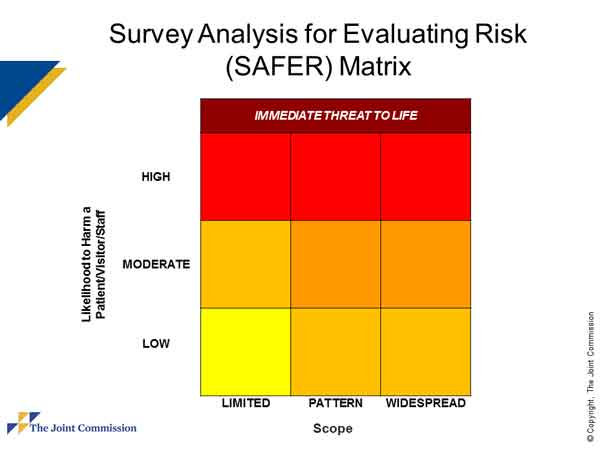TJC & CMS News Blog
Information for BH Organizations
To read articles written prior to January 2015, please view our Newsletter Archive.

Pain Management: New Requirements in TJC Behavioral Health Standards
Is your organization surveyed under The Joint Commission’s Behavioral Health Care standards? If so, be aware of new requirements effective July 1, 2019 related to pain assessment and pain management. First, let’s review the current requirements and then take a look at the new ones coming in July.

Ligature Risks: New FAQs from TJC
Have you seen The Joint Commission’s latest FAQs on ligature risks? In January, TJC published three new FAQs on this topic. One is particularly noteworthy since it involves somewhat of an easing of TJC’s original position. So, let’s cover that one first. Ligature...

Culture of Safety: Now Part of your TJC Survey
Wondering how The Joint Commission’s emphasis on a culture of safety will impact your survey? We’re getting feedback on recent surveys and it’s clear this is a top priority for TJC.

TJC Survey Outcomes: Update on 2018 Trends for BH Organizations
Wondering how your TJC survey outcomes compare with other behavioral health organizations? Check out this recent TJC data to see how you stack up.

Treatment Planning in Behavioral Healthcare: Survey Challenges
“Oh, no! The surveyors cited us again for treatment planning.” It’s an all-too-common refrain following a Joint Commission or CMS survey. Sure, it's frustrating and, yes, there is surveyor variability. But if you tackle the the most common pitfalls, you'll definitely...

National Patient Safety Goal NPSG.15.01.01: Q&A on New Requirements
Is your organization ready for the revised NPSG.15.01.01 effective July 1, 2019? There are new and expanded requirements you’ll need to address.

SAFER Matrix: Update for Psychiatric Hospitals and BH Organizations
The Joint Commission’s SAFER matrix – that colorful grid displaying survey findings – we’ve all become accustomed to it. But how does it impact the survey process? And how is the scoring shaking out for psychiatric hospitals and behavioral health organizations? Let’s take a look.

National Patient Safety Goal NPSG.15.01.01: Changes Coming in 2019
Suicide risk assessment continues to be a high focus area for The Joint Commission. Accordingly, TJC will further strengthen its approach to suicide risk reduction in 2019 and revise National Patient Safety Goal NPSG.15.01.01. As a result, the expanded NPSG.15.01.01 will require organizations to do the following …

Joint Commission Complaint Reporting: Time to Change Your Public Notice
The Joint Commission has changed its process for complaint reporting. Effective September 1, a Joint Commission employee will no longer answer the complaint line at TJC's Office of Quality and Patient Safety. Instead, there will be an automated message. Over the...

Joint Commission Surveys: High-Risk Areas
Did you know Dr. Mark Chassin, President and CEO of The Joint Commission, recently sent a letter to CEOs of accredited organizations about four areas surveyors will closely scrutinize during Joint Commission surveys? The June 19 letter identifies “four high-risk areas...

